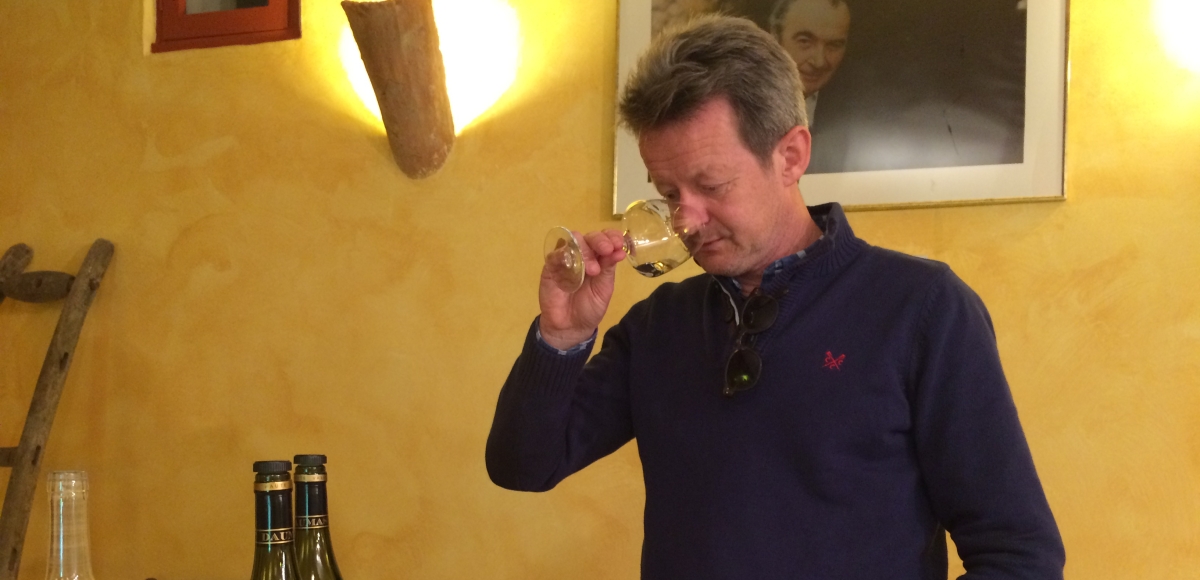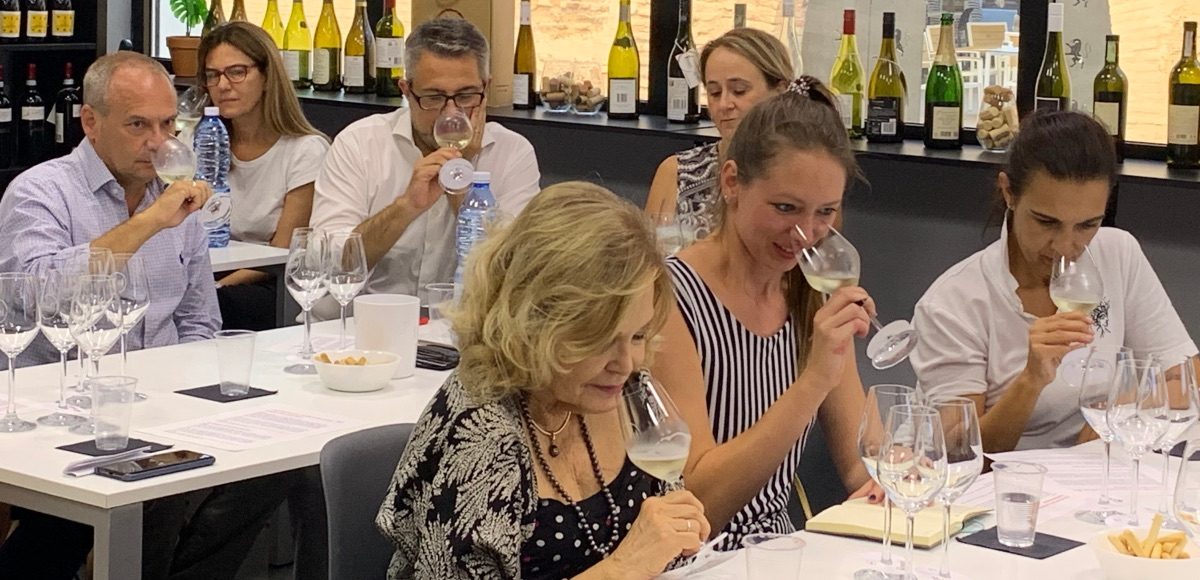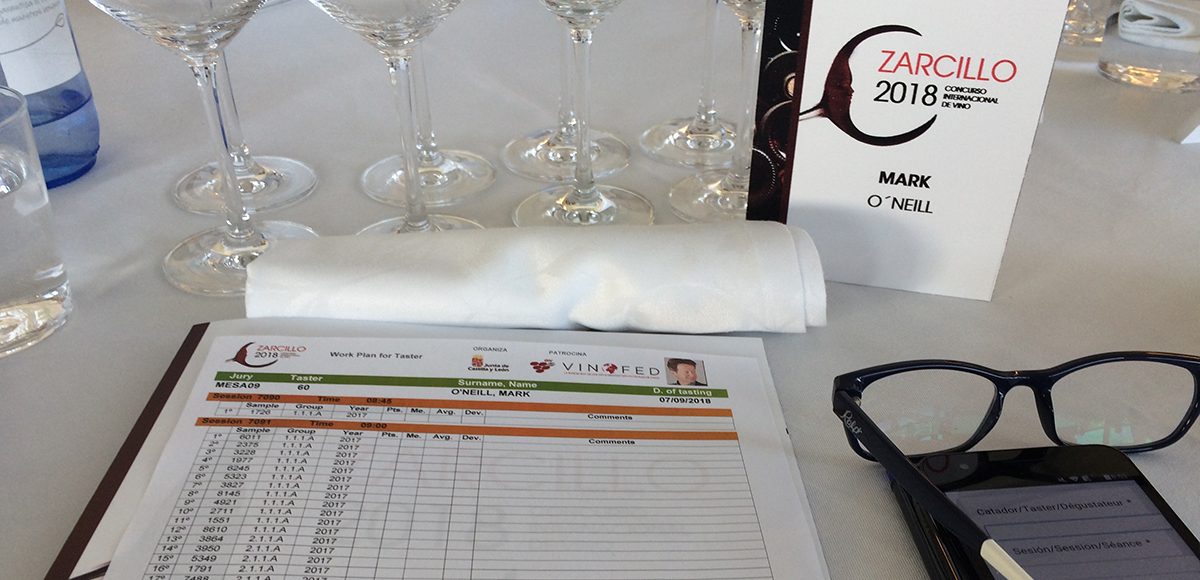To taste wine correctly is easy, it only requires practise. Recently I have been tasting lots of wines with students doing the WSET wine courses. Here are the three steps to increase your enjoyment of taste wine:
Firstly look at the wine. Tilt the glass away from you, preferably against a white background so that the colours stand out. With red wines you can tell a lot about the wine by the colour. One exercise to do with friends is to take a glass of Rioja ‘joven’ and a glass of Rioja ‘Reserva’ and look at the different colours.
The ‘joven’ wine will have a deep ruby colour in the middle becoming more purple as you observe the arc of the wine. This purple colour is typical of a young wine. Whereas the Reserva wine will be a medium garnet colour, typical of wine that is older and more mature. Overtime red wines change colour from purple to ruby to garnet to brick. So without knowing anything about the wines, just by looking you know its age and that consequently the taste of the wine will be different.
With white wines firstly check to see if the wine is clear or hazy, if it is the latter then, unless it is an unfiltered wine, there is likely to be problem. Most white wines will be either pale to medium lemon, gold or amber colour, depending on the grape variety and style of wine. As a white wine ages it develops a deeper colour.
Step two, smell the wine. This is the most important part of the tasting because flavour is perceived as an aroma. Swirl the glass in order to release the aromas, put you nose part way into the glass and take a short deep inhale. To start with just try and identify whether the wine is fruity and if so what kind of fruit does the aroma remind you of. Over time it becomes much easier to identify particular flavours and other characteristics associated with the wine making process or ageing of the wine. For example, a wine that has been aged in an oak barrel will have toasted, woody, spice, vanilla and animal aromas.
The third step is to taste the wine. Take half a mouth full, let the wine wash over your tonge while you suck in a little air mixing making a soft slurping sound, this helps to release the flavours. Firstly note whether the wine is dry, off dry or sweet. Then check whether the wine has a low, medium or high level of acidity. If you notice that you are salivating while swirling the wine in your mouth, this indicates a higher level of acidity.
If you feel a mouth puckering dryness when tasting a red wine, these are the tannins, which come from the skins of the grapes. We note the level of tannin, the higher to low and whether they are soft or hard.
Alcohol feels warm so the higher level the warmer the wine will feel. Fuller bodied wines, those with more structure and depth will tend to have a higher level of alcohol.
Then we note down the particular flavours, which should be a reflection of the aromas.
Hopefully the wine will have all these elements in harmony making tasting a enjoyable experience.










